Pregnancy is a life-changing journey, not just physically but mentally. While many focus on the visible bodily transformations, few realize the incredible changes happening inside the brain. New research reveals that pregnancy rewires the brain in ways that enhance bonding, emotional intelligence, and responsiveness to a baby’s needs. So, is “baby brain” a real thing? The answer may surprise you—it’s not about forgetfulness but about fine-tuning the mind for motherhood.
The Science Behind Pregnancy Brain Changes

If you’ve ever heard a pregnant woman joke about “baby brain,” you might assume it means forgetfulness or mental fog. However, neuroscientists have discovered that the brain undergoes structural remodeling, improving areas linked to nurturing and caregiving.
Dr. Emily Jacobs, a neuroscientist from the University of California, Santa Barbara, explains that pregnancy doesn’t damage the brain but optimizes it for motherhood. “Think of it like a sculptor refining a masterpiece,” she says. “It’s not about losing cognitive function but gaining specialized skills to care for a baby.”
These changes start as early as nine weeks into pregnancy and continue beyond birth, shaping how a mother interacts with and responds to her child.
How Pregnancy Rewires the Brain
Neuroscientists have studied the brains of pregnant women using MRI scans and found some surprising patterns:
Video : Your Brain Changes All the Time, but Being a Mom Changes It Forever
✔ Reduction in Gray Matter – Out of 400 brain regions studied, 80% showed a decline in gray matter, particularly in areas responsible for processing emotions and social interactions. This might sound concerning, but it actually helps the brain become more efficient at understanding emotions.
✔ Increased Activity in Emotional Centers – The amygdala, which regulates emotions, becomes more active, making mothers more sensitive to their baby’s facial expressions, cries, and needs.
✔ Stronger Neural Connections – White matter, the brain’s communication network, becomes more efficient, allowing different regions to work together more effectively. This boosts a mother’s ability to multitask and respond quickly to her child.
✔ Enhanced Social Cognition – Mothers experience heightened social awareness, helping them recognize potential threats and improve bonding with their baby.
Is “Baby Brain” a Myth?
Many women report feeling forgetful during pregnancy, but studies suggest that memory loss is not the defining feature of pregnancy brain. Instead, the brain reorganizes itself to focus on what truly matters:
🔹 Understanding social cues
🔹 Enhancing emotional intelligence
🔹 Developing stronger attachment responses
🔹 Improving problem-solving skills related to caregiving
Rather than becoming scattered or absent-minded, pregnant women prioritize information differently. Everyday distractions may take a backseat, but when it comes to responding to their baby, mothers show increased cognitive efficiency.
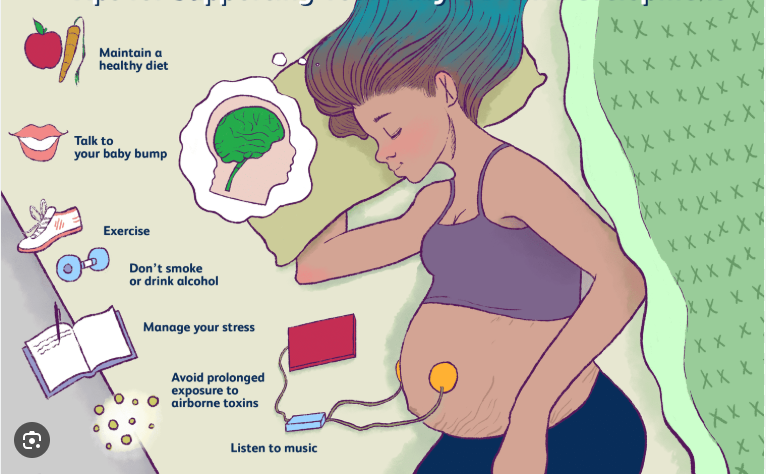
Pregnancy Creates a “Window of Learning”
Scientists believe that pregnancy opens a unique learning window, allowing women to quickly adapt to the challenges of motherhood.
Dr. Ronald Dahl, a neuroscientist at the University of California, Berkeley, explains that pregnancy hormones reshape priorities and motivations, making women more focused on caregiving and more skilled at recognizing their baby’s needs.
This heightened awareness isn’t limited to just birth—it extends well into the postpartum period, helping mothers develop expertise in infant care without formal training.
Brain Changes Last Beyond Birth
While some pregnancy-related changes fade over time, others persist for years.
✔ Gray matter reduction remains for up to two years postpartum, ensuring mothers stay highly attuned to their child’s emotional needs.
✔ Brain scans can accurately identify whether a woman has been pregnant, proving that the structural changes are long-lasting.
✔ Some cognitive enhancements remain for life, helping mothers stay emotionally responsive and socially aware even after their children grow up.
Not Just Biological Mothers Experience These Changes
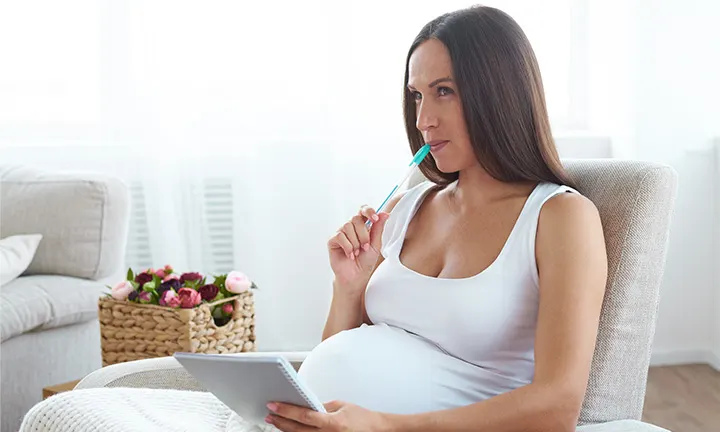
While pregnancy hormones drive these changes, they aren’t exclusive to biological mothers. Research shows that fathers, adoptive parents, and primary caregivers who engage in hands-on childcare also exhibit brain changes, particularly in areas related to empathy and emotional processing.
According to Dr. Jonny Kohl, a researcher in parenting and neurobiology, the brain starts preparing for parenthood long before birth. While pregnancy hormones accelerate the process, caregiving itself can reshape the brain in profound ways, reinforcing the idea that parenting is a learned skill, not just a biological instinct.
How These Changes Impact Motherhood
The neurological transformation of pregnancy offers many benefits that go beyond just bonding with a baby. These changes help new mothers:
✔ Handle stress more effectively – The brain strengthens its emotional resilience, helping moms stay patient even during sleepless nights.
✔ Recognize subtle emotional cues – Mothers become more attuned to facial expressions, cries, and body language, allowing them to respond instinctively to their baby’s needs.
✔ Develop stronger multitasking abilities – White matter improvements make it easier to juggle multiple responsibilities without feeling overwhelmed.
✔ Build deeper connections – Increased emotional intelligence helps mothers form stronger relationships, not just with their babies but also with family and friends.
Video : New Study Says Pregnancy Changes the Brain
The Emotional Side of Pregnancy Brain
These brain changes can also make new moms more emotionally sensitive, which may contribute to postpartum mood swings. Understanding that these shifts are part of a natural neurological process can help new mothers navigate postpartum challenges with confidence.
Dr. Jacobs emphasizes that the brain is wired to prioritize caregiving. So, if you ever feel more emotional after childbirth, remember—it’s not a weakness. It’s proof that your brain is adapting to motherhood.
Conclusion: Pregnancy Brain Is a Superpower, Not a Flaw
Forget the myth that pregnancy makes women forgetful or mentally slower. Science now proves that pregnancy fine-tunes the brain for motherhood, enhancing emotional intelligence, social awareness, and problem-solving skills.
From strengthening caregiving instincts to boosting multitasking abilities, pregnancy permanently reshapes the brain to ensure mothers are prepared for the challenges of parenthood.
So, the next time someone jokes about “baby brain,” you can confidently reply:
“Actually, my brain just got an upgrade.”
At 62, This TV Star is Turning Heads – Check Out Her Stunning Transformation
This glamorous TV star has had a life filled with ups and downs, including a successful career, a famous divorce, and finding love again in her 60s. Let’s take a closer look at her journey and stunning change over the years.

This well-known television star first caught the public’s eye in the late 1970s with her breakout role as the stylish and clever secretary Jennifer Marlowe on “WKRP in Cincinnati.” Her mix of beauty and great comedic timing made her an instant hit, but her rise to fame didn’t happen overnight. Before she became the blonde bombshell known by millions, she had a simple upbringing in Saint Paul, Minnesota.

Born in 1945 to a chemist father, she had jet-black hair as a child. She studied art at the University of Minnesota, but her stunning looks helped her win spots in beauty pageants, even finishing as a runner-up in the Miss Minnesota contest in 1964.

Her early life was marked by challenges, including a marriage and divorce before she turned 21. She took on a teaching job to support herself and her daughter while finishing her college degree.
She grew interested in acting through local theater productions, performing in plays like “Fiddler on the Roof,” “Born Yesterday,” and “The Threepenny Opera.” Determined to pursue acting more seriously, she and her second husband, actor Ross Bickell, moved to Los Angeles in the mid-1970s.

After landing small roles in popular shows like “S.W.A.T.” and “The Bob Newhart Show,” her career began to grow. However, her choice to dye her hair blonde truly pushed her into the spotlight.
In 1978, she got her role on “WKRP in Cincinnati,” earning two Emmy nominations. While she was doing well professionally, her second marriage ended in 1981, partly due to the pressures of her rising fame.

Her success on “WKRP in Cincinnati” opened doors for more roles, leading her to portray real-life Hollywood figures like Jayne Mansfield in “The Jayne Mansfield Story” and Thelma Todd in “White Hot: The Mysterious Murder of Thelma Todd.”
Although she showed her dramatic skills, she was often seen as a glamorous Hollywood star. Still, her roles kept her popular and confirmed her status in the television industry.

In the early 1980s, she started a high-profile relationship with Burt Reynolds, one of Hollywood’s biggest stars. They were often seen on red carpets and magazine covers, becoming a glamorous couple. After dating for six years, they married in a small but public ceremony in 1988.
Their wedding took place at Reynolds’ Florida ranch and attracted much media attention, with helicopters overhead and paparazzi waiting outside.

Although their relationship looked perfect to the public, problems arose behind the scenes. Just five years after their wedding, Reynolds served her divorce papers.
Their separation became famous, with tabloids reporting accusations of infidelity, bad parenting, and financial issues. Reynolds claimed she maxed out his credit cards and said she had been unfaithful.
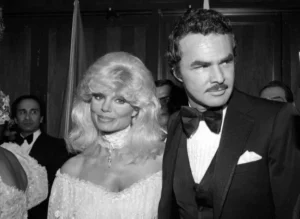
In 1995, she accused Reynolds of being violent. Their divorce was messy and took years to finalize, with their financial ties lingering for over two decades.
Despite the difficult end to their marriage, the actress later looked back on their relationship positively. In an interview after Reynolds died in 2018, she said they reconciled before he passed away.
“We were friends first and friends last. It’s time to move on,” she stated. Their adopted son, Quinton, played a key role in their eventual reconciliation.
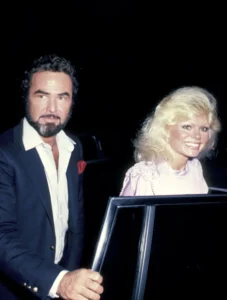
“We have this wonderful child together. Having a son was a big event in our lives, and everything revolved around him,” she explained. Their son even brought them together one last time before Reynolds died.
In a final kind gesture, Reynolds took her out to dinner and brought her flowers. She cherished these memories, speaking fondly of her ex-husband’s gentle side.
While her tumultuous relationship with Reynolds was the focus of many headlines in the 1990s, the actress remained committed to her career. She continued to work in television, often appearing in sitcoms and TV movies, although her roles often reflected the glamorous image she built in the 1980s.

In 2008, at 62, she found love again, this time in a quieter setting. She married Bob Flick, a musician and founding member of The Brothers Four, a folk group.
Their relationship had deep roots, as they first met decades earlier at a movie premiere when her career was just beginning. After reconnecting later in life, they wed in a private ceremony attended by close family and friends, including her son.
This beloved figure in Hollywood is none other than Loni Anderson, now 79. Take a look at the actress’s transformation over the years as she embraced life in the spotlight.


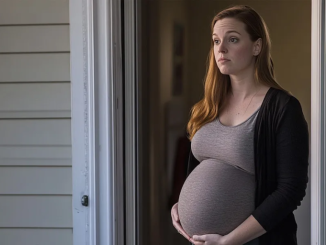
Leave a Reply